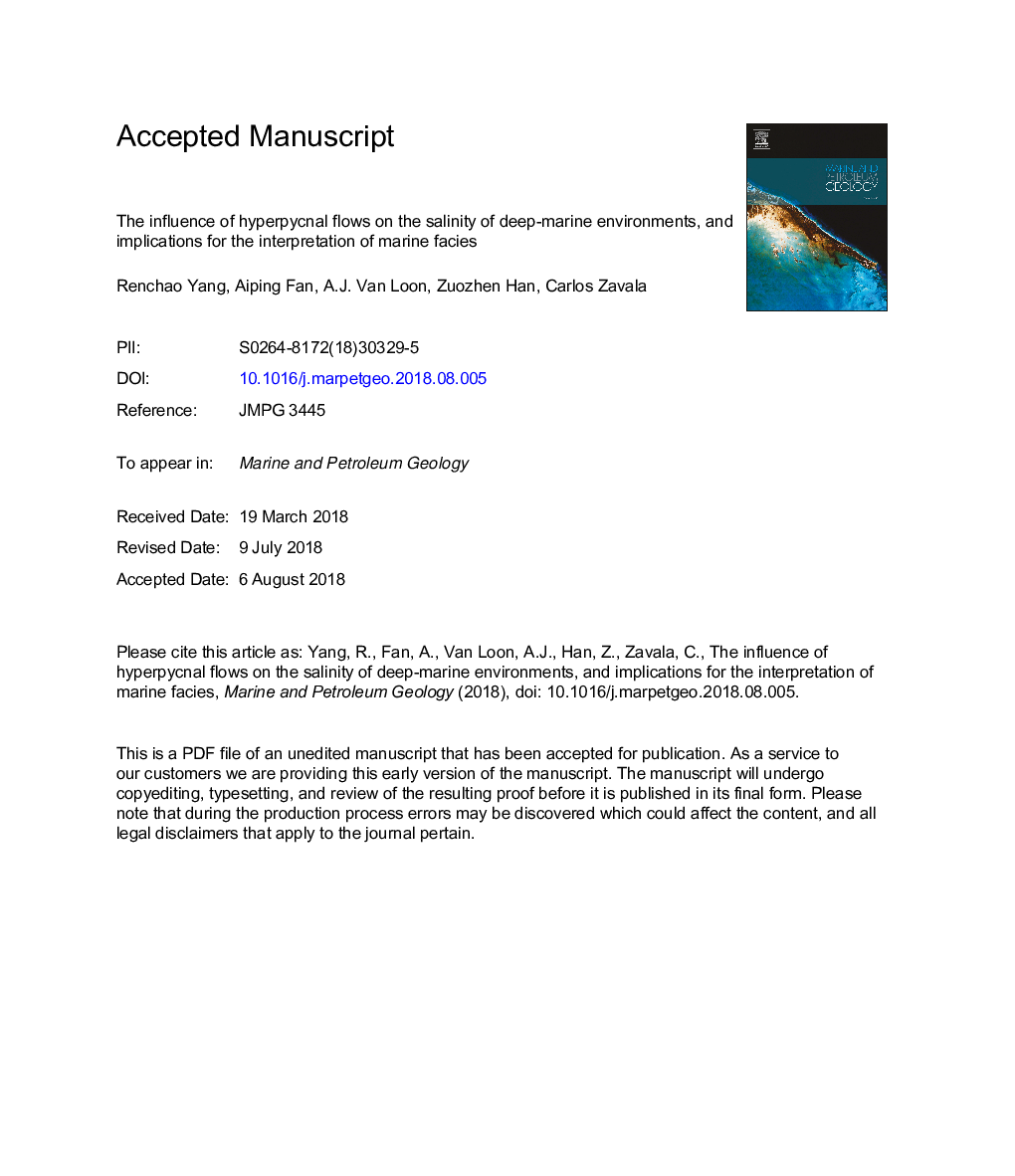| Article ID | Journal | Published Year | Pages | File Type |
|---|---|---|---|---|
| 8908929 | Marine and Petroleum Geology | 2018 | 45 Pages |
Abstract
Interpretation of the continental or marine character of sediments on the basis of the paleosalinity is increasingly based on the concentration of some trace elements. The paleosalinity can be affected, however, also in deep-marine environments, by discharge peaks of major sediment-laden rivers. These induce hyperpycnal flows that run down the basin slope. The huge volume of fresh water gradually mixes with the ambient saline seawater, diminishing the paleosalinity. The temporary lowered paleosalinity may be preserved in the sedimentary record in the form of 'diverging' concentrations of trace elements and trace-element ratios. This is exemplified for the Early Cretaceous Lingshandao Formation on Lingshan Island (western Yellow Sea). It was found during field work and geochemical analysis that hyperpycnal currents may not only lower the salinity of a deep-marine environmental setting, but may also carry along continental plant fragments and other biological remains, which may obscure the marine character of the sediments. It is deduced that detailed facies analysis in the field is consequently required to reveal the true character of a marine environment.
Related Topics
Physical Sciences and Engineering
Earth and Planetary Sciences
Economic Geology
Authors
Renchao Yang, Aiping Fan, A.J. (Tom), Zuozhen Han, Carlos Zavala,
